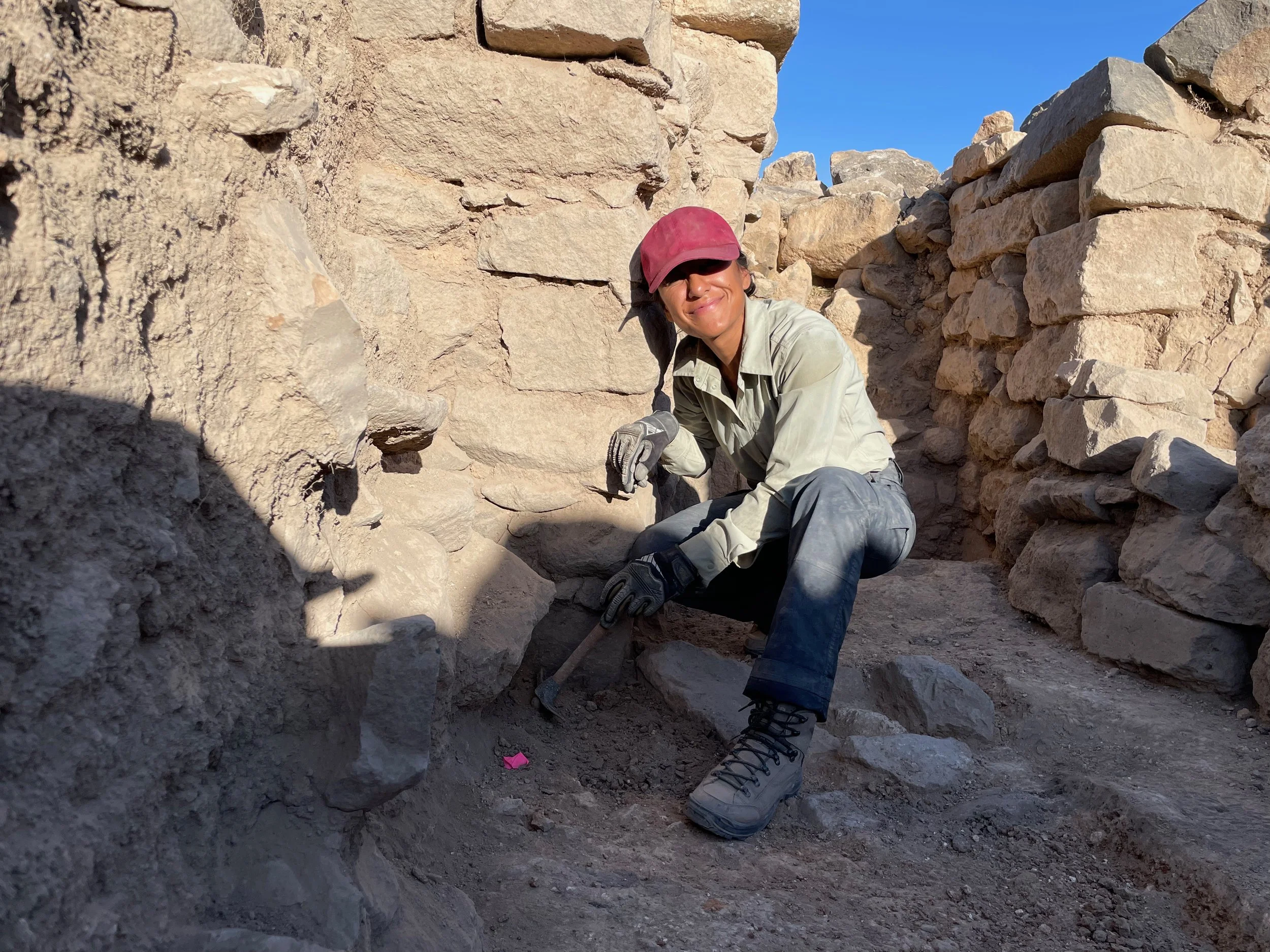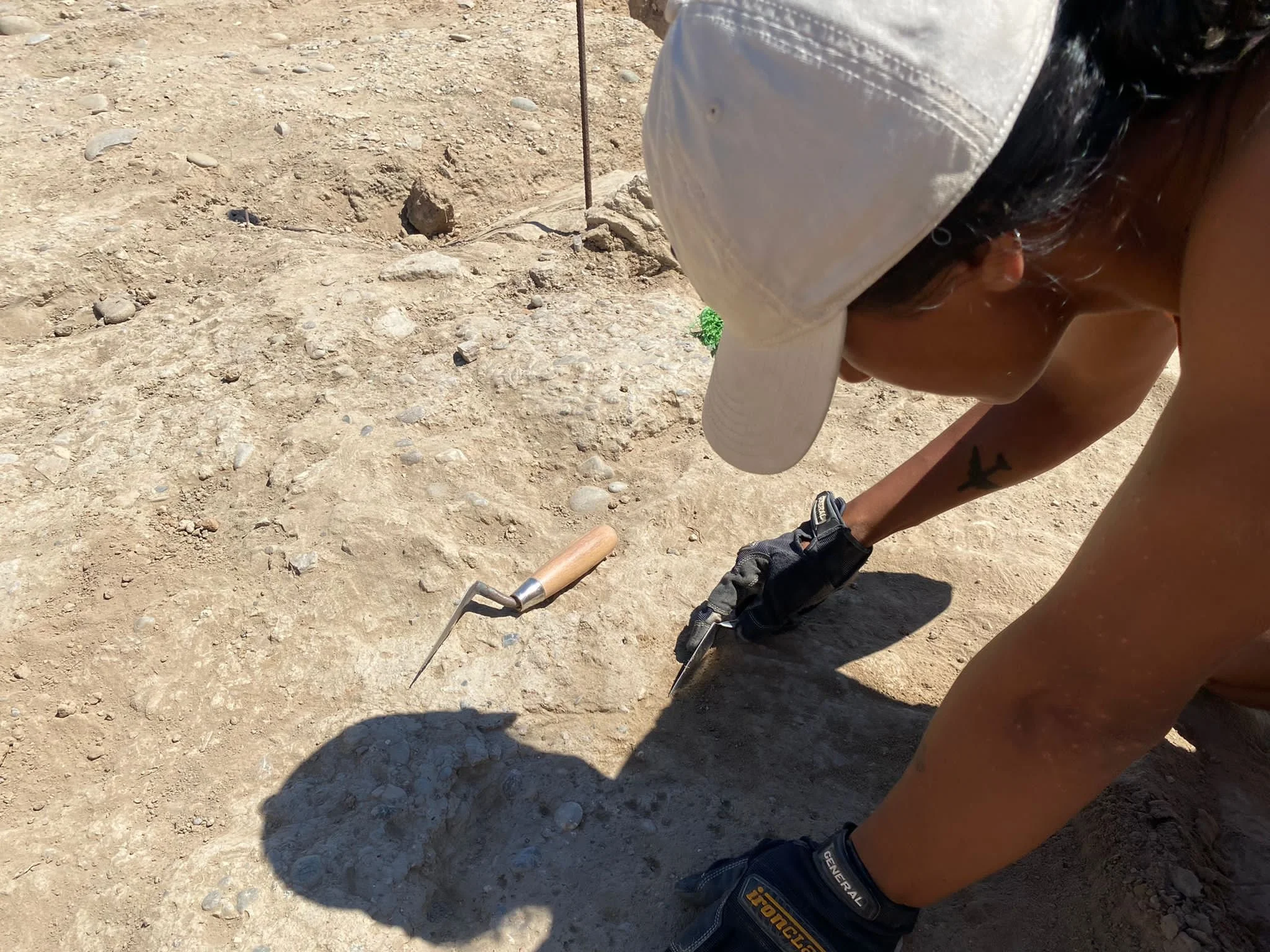My archaeological expedition led me to the understanding of being involved in cultural heritage to develop a critical understanding of the diverse social, cultural and political contexts in which the processes for conceptualising and managing cultural heritage operate.
al Karak, Jordan
My most recent archaeological expedition took place in al’Karak, Jordan.
Khirbat al-Baluʿa is a multi-period site in central Jordan, north of al Karak, stretching over approximately 20 hectares. Baluʿa is located next to the Wadi Baluʿa, which is a tertiary tributary to the Wadi Mujib. In this location, Baluʿa was able to control a major north-south route and guard access from the north to al Karak Plateau over the millennia.
Photo: Excavating a room in the Khan while marking a bangle fragment possibly dating to the Ottoman period.
Basilicata, Italy
My first archaeological expedition took place in Italy, where I had the chance to work with Classical archaeology.
One of the key sites where these interactions can be studied in detail is Incoronata in the Basilicata region of southern Italy. The site is nestled atop a hill overlooking the valley of the river Basento, a few kilometers inland from the Ionian Gulf where many Greek colonies later flourished. Incoronata was an important indigenous site before a group of Greeks settled there in the 7th century. By studying the phases before and after the arrival of the Greeks, archaeologists can track the impact of the Greek’s arrival on the local culture and investigate how the practices, beliefs and identities of all people involved changed through this interaction. Because Incoronata was abandoned at the beginning of the 6th century BC and never re-occupied, the site is characterized by the exceptional preservation of a series of production and ritual contexts, showing a mix of both local and Greek material culture.

